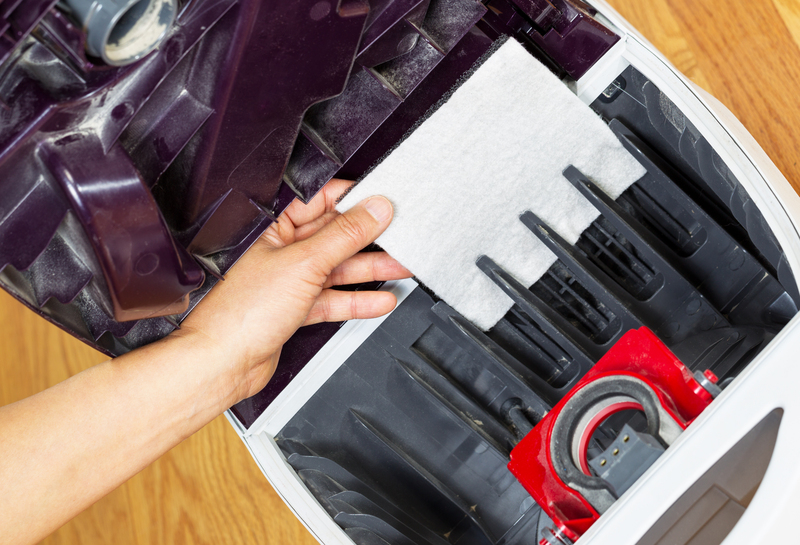Steps to Fluffy Towels: Expert Tips
Posted on 21/10/2024
Keeping your towels soft and fluffy can seem like a daunting task, especially after multiple washes. Over time, towels can become rough, lose absorbency, and feel less luxurious. However, with the right care and some expert tips, you can maintain the plushness and absorbency of your towels for longer periods. This comprehensive guide provides detailed steps to achieving the fluffiest towels you can imagine.
Understanding the Elements of Fluffy Towels
Before delving into the steps, it's crucial to understand what makes towels soft and fluffy. Several factors influence the texture and absorbency of towels:
1. Material: The type of fabric used--like Egyptian cotton, Turkish cotton, or bamboo--plays a considerable role.
2. Weave: The way fibers are woven can affect the towel's plushness.
3. Care Routine: Proper washing and drying techniques are essential.
4. Detergents and Softeners: Using suitable laundry products can make a significant difference.

Step 1: Choosing the Right Towels
The journey to fluffy towels starts with making the right purchase. Here's what you should look for:
- Material: Opt for high-quality materials like Egyptian cotton or Turkish cotton, known for their softness and durability. Bamboo towels are also an excellent alternative.
- GSM (Grams per Square Meter): A higher GSM indicates a denser and more absorbent towel. Towels with a GSM between 400 and 600 are usually perfect for a balance between plushness and quick drying times.
- Loops: Towels with more loops are softer and more absorbent, so check the towel's weave before buying.
Step 2: Proper Washing Techniques
Washing your towels correctly can prevent them from becoming rough and less effective. Here are the essential washing tips:
- First Wash: When you first purchase towels, wash them before use. New towels often have a finish that can reduce their absorbency.
- Sorting: Always wash towels separately from other laundry to avoid lint transfer.
- Detergent: Use a mild detergent and avoid overloading your washing machine. Excess detergent can build up in the fibers, making towels stiff.
- Temperature: Wash towels in warm water (around 30-40?C or 86-104?F) to dissolve detergent effectively while protecting the fibers.
- Avoid Bleach: Bleaching agents can damage the fibers, so use oxygen-based brighteners if necessary.
Step 3: Rinsing and Softening
Rinsing is a critical step in maintaining fluffy towels:
- Vinegar Rinse: Add a cup of white vinegar during the rinse cycle once a month. Vinegar helps break down detergent residues and restores softness.
- Baking Soda: Occasionally add half a cup of baking soda to the wash cycle. Baking soda can help to remove odors and soften the fibers.
- Fabric Softeners: Use fabric softeners sparingly. Overuse can coat the fibers, reducing absorbency and fluffiness. Consider natural alternatives like wool dryer balls.
Step 4: Drying to Preserve Fluffiness
Drying is equally critical in maintaining soft towels:
- Shake It Out: Shake your towels out before putting them in the dryer to fluff the fibers.
- Dryer Settings: Use a low to medium heat setting. High heat can damage the fibers and cause shrinkage.
- Dryer Balls: Wool dryer balls or clean tennis balls can help fluff the towels as they tumble.
- Avoid Overdrying: Overdrying towels can make them stiff. Remove them from the dryer while still slightly damp and air-dry completely.
Step 5: Regular Maintenance
Regular upkeep is essential to keep your towels in top condition:
- Frequency: Wash towels every three to four uses to prevent the buildup of body oils and detergent residues.
- Storage: Store towels in a cool, dry place. Ensure they are completely dry before folding to prevent mildew.
- Sunlight: Occasionally air-dry your towels in the sunlight. UV rays can naturally disinfect and freshen them.
Troubleshooting Common Problems
Even with the best care, you might encounter some issues. Here's how to tackle them:
- Musty Smell: If your towels start to smell musty, it's often due to mildew. Wash them with hot water, a cup of vinegar, and baking soda.
- Rough Texture: To address roughness, use the vinegar rinse method or run the towels through a wash cycle with half a cup of baking soda.
- Lint Shedding: New towels tend to shed lint. To minimize this, wash them a few times before regular use, and clean your dryer's lint trap often.
Expert Tips for Extra Luxury
For even more luxurious towels, consider these expert tips:
- Towel Warmer: Investing in a towel warmer can provide a spa-like experience, giving you warm, fluffy towels every time.
- Essential Oils: Add a few drops of essential oils (like lavender or eucalyptus) to your wool dryer balls for naturally scented towels.
- Microfiber Towels: Consider adding some microfiber towels to your collection. They are extremely absorbent and dry quickly.

Environmental Considerations
Be mindful of the environmental impact of your towel care routine:
- Eco-Friendly Detergents: Choose biodegradable and chemical-free detergents.
- Cold Water Washes: Whenever possible, wash in cold water to save energy.
- Line Drying: Line drying is the most energy-efficient method and can help extend the life of your towels.
Conclusion
Achieving and maintaining fluffy towels require attention to detail and consistent care. By following these steps and incorporating expert tips into your routine, you can ensure your towels remain soft, absorbent, and luxurious for a long time. From selecting the right materials to using proper washing techniques and regular maintenance, every step plays a crucial role. So next time you reach for a towel, enjoy the plush, spa-like feel you've worked to maintain.









